The Children’s Book Review | August 29, 2016
We All Saw a Cat! And You Should Too!
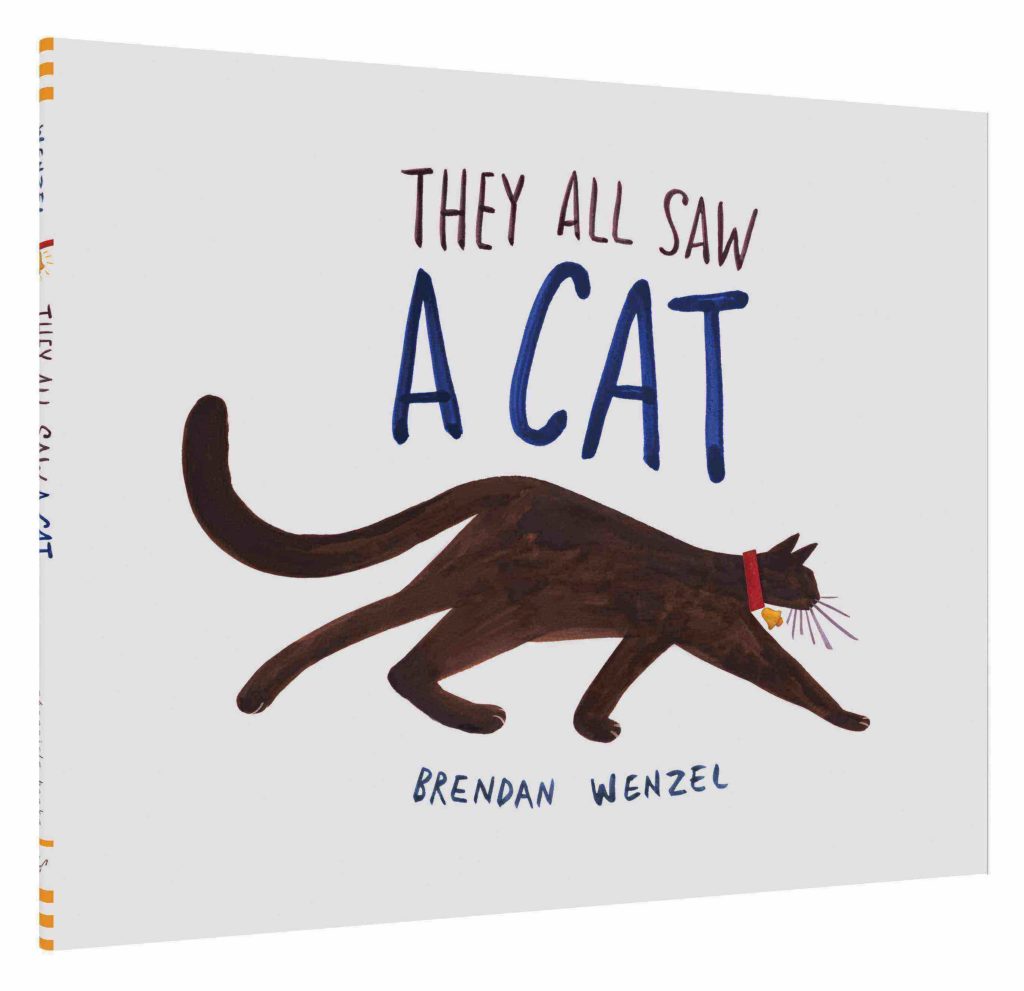 The Children’s Book Review: They All Saw a Cat is your debut picture book as both the author and illustrator. It went to an 8-publisher auction. It has been claimed by an editor that you are “the next freakin’ Eric Carle.” Influential librarian Betsy Bird declared that she believes you have created the Caldecott winner for 2017. Wow! How does this exceptional response to your work make you feel?
The Children’s Book Review: They All Saw a Cat is your debut picture book as both the author and illustrator. It went to an 8-publisher auction. It has been claimed by an editor that you are “the next freakin’ Eric Carle.” Influential librarian Betsy Bird declared that she believes you have created the Caldecott winner for 2017. Wow! How does this exceptional response to your work make you feel?
Brendan Wenzel: I feel incredibly fortunate and appreciative! It’s beyond humbling to hear some of the very kind things people have been saying about the book. Considering how personal a project They All Saw A Cat was, and how much of my own experience ended up in the book, the fact that it has been resonating with readers is meaningful in a way that is tough to properly communicate.
All that being said, my wife and I have a mantra, “Keep it about the work.” Goal number one is always trying to stay engaged with, and appreciative of, the creative process—whether that be digging around and exploring new interests or doing my best to stay present and playful when working with materials and creating images.
All the excitement now that the book is finished is wonderful and humbling, but it’s icing on the cake, and I’m certainly doing my best to stay focused on the cake.
The illustrations in They All Saw a Cat were rendered in almost everything imaginable: colored pencil, oil pastels, acrylic paint, watercolor, charcoal, Magic Marker, and number 2 pencils. Where do you begin? Does the image always start with the good old number 2 pencils and progress from there? And, if so, which medium comes next?
I do actually begin with number 2 pencils! Once things float around in my head for a bit, I dive into sketches, which are usually the kind of chicken scratch no one can make sense of but me.
Final art I typically create using a good deal of watercolor and cut paper, which I then composite and fine-tune in the computer during the later stages of the process. I do however love using new materials whenever possible, as they encourage me to play more while I work. If this is successful it can add a spontaneity to the illustrations, that I feel can be vital. Luckily, I had many chances to play while working on They All Saw A Cat, as each image provided the opportunity to explore the creatures perspective with unique materials and approaches.
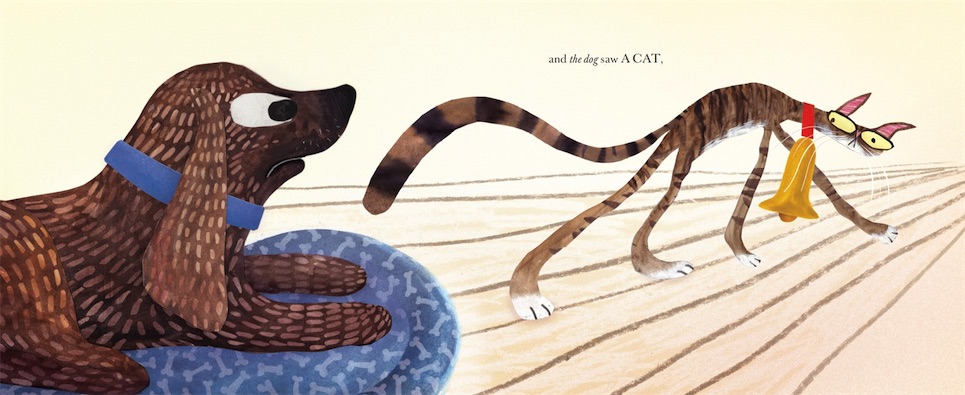
And the text! The simplicity of the prose is pure perfection alongside the artwork. How did this story begin? Words first? Art first? A specific inspiration?
In a nutshell the book is my attempt to make sense of several years of experience I had traveling and living abroad with my wife.
Spending time outside the United States provided the privilege to step away from the culture in which we were raised and the opportunity to encounter fresh ways of seeing the world. These shifts in perspective enriched every aspect of day-to-day life and challenged us to expand in wonderful ways. I was an idea I wanted to explore more.
Another huge influence has been drawing and painting with children. I’m sure I’m not the first one to say this, but if you want to see something unique and unexpected about a subject matter, ask twenty eight-year olds to sketch it. There are no bad drawings and every perspective reveals something fresh and exciting.
The framework for the book grew from a lot of ping-ponging back and forth between art and text. I believe the first line I scribbled out was “And the Mice saw A Cat and the Cat was a frightening cat,” and the original image showed five or six mice escaping from a less stylized cat than the one that appears in the final book. From there the process involved whittling away, sketching and reworking, until landing on, “The Mice saw a Cat” which led to “They All Saw A Cat”.
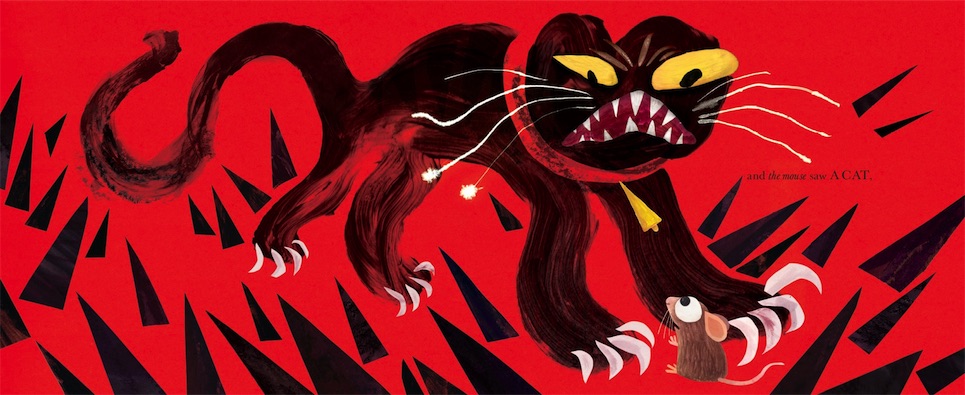
“The cat walked through the world, with its whiskers, ears, and paws …” is repeated throughout the book. This phrasing serves as a reminder to do one’s best to take everything in—to be aware—is this what you intended to be a takeaway from the story? Or are these words simply an important observation that this is how cats absorb their surroundings?
It’s great to hear your takeaway!
It’s tough for me to land on a single message. One of the reason’s I love the thirty-two page format is it really helps me work out ideas or feelings, that I might otherwise have difficulty communicating. The interplay of text and images—that back and forth—is a beautiful means of exploring thoughts I might struggle to articulate outside of a picture book.
Ultimately my highest hope for the project is that it will leave the reader with questions, and encourage conversations—particularly about perception. Fingers crossed I might be in the room for a few of them, as it’s been exciting and surprising to see readers of all ages noticing things I had not anticipated.
One of the reasons I used the line “Whiskers, Ears and Paws” is that it referenced not only the parts essential for a Cat to engage with its world, but also those components which an observer might use to describe the animal in the most basic terms.
For many kids, They All Saw a Cat will be an introduction to perception—the perspective of others and also how an individual sees himself. The switch between “a cat” and “the cat” is genius. I hope this book is read in many classrooms. How much research went into creating illustrations that combined the right balance of proximity, physiology and emotion to demonstrate the power of perception?
I am fascinated by animal intelligence and how the various species we share the planet with perceive their world. Clearly I was thrilled that researching the book gave me the chance to dive in and read as much as I could about the subject.
That being said, it was very important to me that the images in They All Saw A Cat were not tied too tightly to scientific fact. I have always tried to be very clear that although I certainly did my best to honor what we know about the physiology and temperament of each creature—liberties were taken and the illustrations in the book came very much from my own imagination. The pictures are ultimately an attempt—using a very human brain—to place myself in the shoes of the animals, and then make a piece of artwork representing how I imagine they might see a cat.
As the perception of the cat differs greatly between all of the animals that see “a cat,” so does the artwork. My favorite illustration is from “the” bee’s perspective—all of those many colorful dots coming together to form the cat. Which illustration took you the longest to create? Which illustration from They All Saw a Cat is your own personal favorite?
I should throw a spoiler alert at the front of this answer as I’m going to reference the end of the book.
The image that took me the longest was the multi-cat, where we see the Cat as a sort of quilt created by all the perspectives we encounter throughout the story. To make the piece I decided to create a sketch and render it again and again using the approaches we encounter throughout the book. I then cut the paintings into pieces (a little painful) and experimented with different combinations. It was a tough one to get right, and I unfortunately ended up needing to create duplicates of many of the cats. When all was said in done, three alternate versions were pasted down before I got it right.
My favorite has actually been changing, depending on my mood, which I’m happy about. The Fish Saw was one of the first images I created for the book, and so will always be a special one for me.
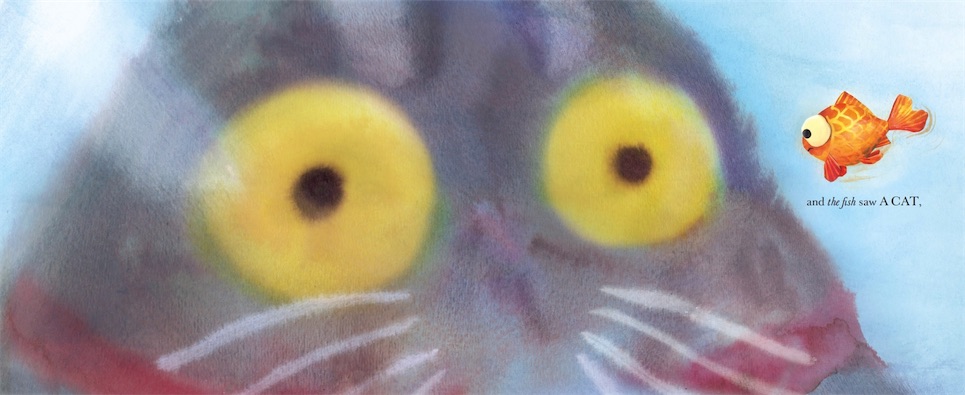
As an ardent conservationist you collaborate with many organizations that work to protect wild places and threatened species. Can you tell us a little bit about your experiences as a conservationist and how your work and passion for the natural world merge with and influence your artistic career?
I’d love to. I’ve been fascinated (arguably obsessed) with wildlife and the natural world since I was a kid, and have always been interested in environmental issues. It’s actually kind of impossible to disentangle my appreciation for wild creatures from my desire to create work.
It was while living in Vietnam that I created a series of images illustrating both common and lesser known creatures from the region—mainly as an attempt to educate myself and of course because they fascinated me. When I began sharing these illustrations with friends and then eventually online, a wonderful thing happened, and many biologists and other folks working in the conservation world began crossing paths with the images. To my delight it turned out there were many opportunities to incorporate these graphic depictions into awareness campaigns and educational programs.
I am proud to have worked with groups around the world and pleased I can do a very small part to help spread the word about some of the issues that threaten wild places and the creatures that call them home.
Lastly, what words of encouragement do you have for aspiring artists young and old?
Be fascinated! If something, anything interests you—learn about it, read about it, talk about it, draw it, paint it, sing about it—whatever feels right. I feel like if you really connect with a subject matter or idea, that relationship is eventually bound to become a creative one, and will lead to exciting work!
***
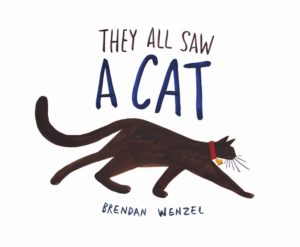 They All Saw a Cat
They All Saw a Cat
Written and Illustrated by Brendan Wenzel
Publisher’s Synopsis: The cat walked through the world, with its whiskers, ears, and paws . . .
In this glorious celebration of observation, curiosity, and imagination, Brendan Wenzel shows us the many lives of one cat, and how perspective shapes what we see. When you see a cat, what do you see?
2-5 | Publisher: Chronicle Books | August 30, 2016 | ISBN-13: 978-1452150130
Available Here:
They All Saw a Cat Book Trailer
About Brendan Wenzel

Brendan Wenzel is an illustrator based in Brooklyn, New York. A graduate of the Pratt Institute, his work has appeared internationally in children’s books, animations, and magazines. They All Saw a Cat is his debut as both author and illustrator.
This interview with Brendan Wenzel, author and illustrator of They All Saw a Cat, was conducted by Bianca Schulze. Follow along with our content tagged with Cats, Chronicle Books, Nature, and Picture Books to discover more great titles.

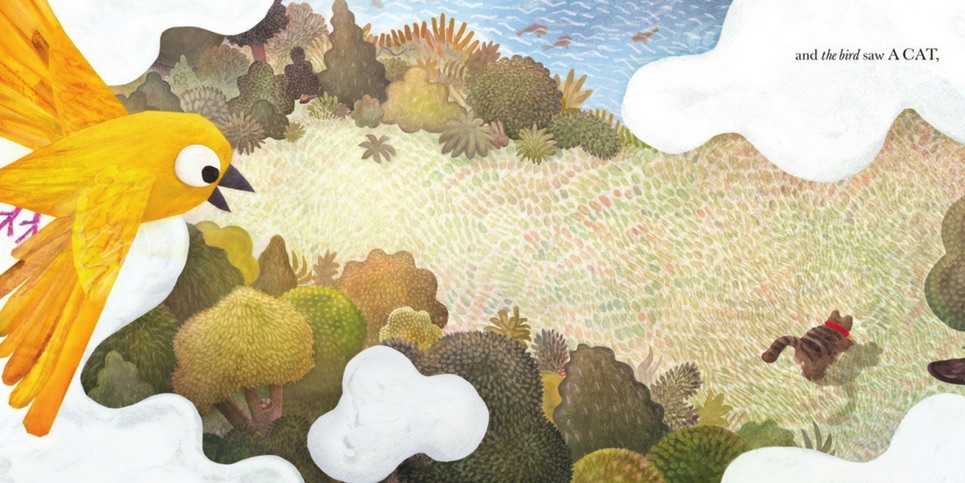
2 Comments
Pingback: Brendan Wenzel: Alles eine Frage der Perspektive – Oh, Panama!
There needs to be a board book version of ‘They All Saw a Cat’ because younger children sometimes rip pages of books.